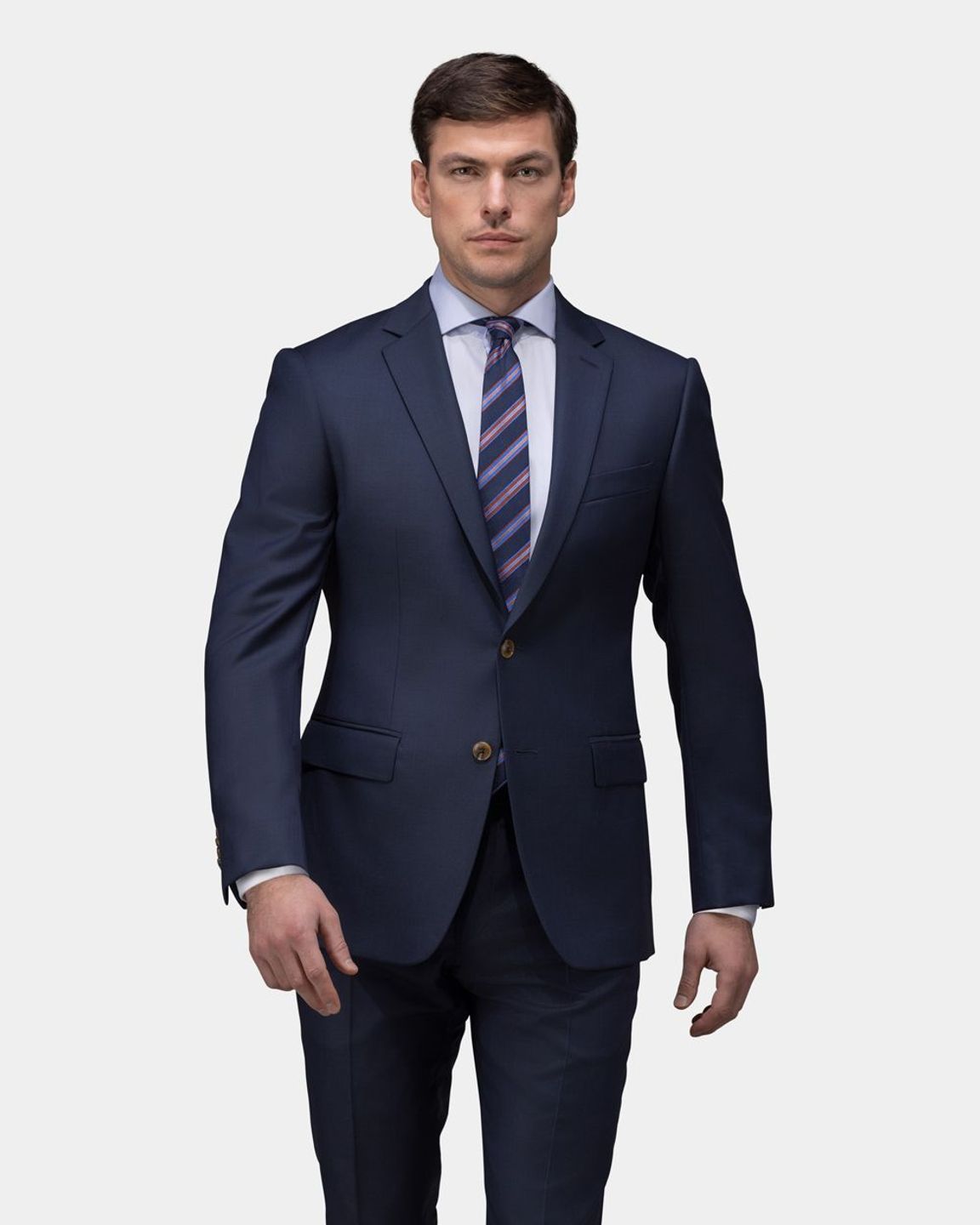Bespoke Tailor Perth: Customized Suits Made Just for You
Bespoke Tailor Perth: Customized Suits Made Just for You
Blog Article
Recognizing the Tailoring Process: From Fabric Option to Last Fitting for the Suitable Wardrobe
The tailoring procedure is a complicated interplay of art and science, starting with the important decision of textile choice and culminating in the exact modifications of final installations. Each fabric type brings special high qualities that influence not only the visual allure yet additionally the garment's longevity and viability for numerous occasions.
Significance of Fabric Choice
Selecting the best material is essential in the tailoring procedure, as it directly affects the comfort, resilience, and general aesthetic of the final garment. The option of fabric sets the foundation for the garment's performance, performance, and style. Different textiles possess one-of-a-kind homes, such as breathability, stretch, and weight, which can dramatically impact how the garment drapes and fits the body.

A customized item made from an ideal fabric not just showcases workmanship but additionally raises the user's self-confidence. Subsequently, recognizing the subtleties of textile option is extremely important for any type of customizing endeavor. It ensures that the final item not just meets the visual wishes of the client but likewise straightens with functional requirements, therefore attaining an unified balance in between kind and function in the customized wardrobe.
Sorts Of Fabrics and Their Uses
Recognizing the different kinds of materials readily available is important for making notified choices during the customizing procedure. Each textile has unique characteristics that determine its suitability for specific garments and events.
Cotton, understood for its breathability and soft qualities, is optimal for laid-back wear and summer season apparel. Its versatility enables it to be tailored right into whatever from t shirts to gowns. Woollen, on the various other hand, is favored for its heat and framework, making it an exceptional choice for official fits and outerwear. Its all-natural flexibility aids garments maintain shape gradually.
Silk exhibits luxury and is lightweight, making it excellent for eveningwear and fragile blouses; nonetheless, it calls for mindful handling due to its delicacy. Linen, with its textured surface, is a prominent selection for cozy environments, providing a crisp and airy feeling, but it wrinkles conveniently, which might influence the garment's look.
Synthetic materials, such as polyester and nylon, offer toughness and resistance to creases, making them ideal for day-to-day wear and active clothing. Comprehending these textile kinds and their homes permits better decision-making, making sure that each customized piece not just fits well but also aligns with the designated purpose and event.
The Tailoring Methods Discussed
The art of tailoring relies upon a range of methods that change textile into well-fitted garments. Central to this procedure is pattern preparing, where a dressmaker produces design templates based on the client's measurements and preferred design. This preliminary step makes certain that the garment use this link will certainly fit the wearer properly prior to any cutting takes place.
When patterns are established, cutting techniques come into play. Accuracy is critical as inaccuracies can cause misfitting garments. Tailors typically make use of different cutting methods, such as single-layer cutting for intricate styles and multiple-layer cutting for effectiveness on typical patterns.
Basting is an additional essential technique, allowing dressmakers to momentarily sew fabric assemble for an initial fitting (wedding suits perth). This technique offers the opportunity to examine the drape and general shape before last sewing
Seaming techniques, including flat-felled seams and French joints, enhance the garment's durability and aesthetic charm. Tailors additionally use methods such as interfacing and cushioning to offer structure and form to specific areas, like collars and shoulders.
Lastly, completing techniques, including hemming and side ending up, ensure the garment's long life while supplying a refined appearance. With each other, these techniques create the backbone of effective tailoring, resulting in beautiful, custom-fit clothing.

Fitting Modifications and Factors To Consider
After the first tailoring strategies have been applied and the garment is built, fitting changes end up being extremely important to accomplishing the excellent fit. These adjustments address numerous aspects of the garment, guaranteeing it contours to the wearer's physique and improves total appearance.

The rise of pants is one more important aspect; it should sit conveniently over the hips without creating pain, permitting convenience of activity. Hemming lengths for both pants and skirts should reflect the wearer's favored article style while valuing proportions.
In addition, focus ought to be offered to the rear of the garment, making certain that there are no undesirable pulls or excess textile - tailor perth. Each modification ought to be meticulously taken into consideration, as also small modifications can considerably affect the total fit and aesthetic of the tailored item, eventually causing a wardrobe that shows self-confidence and class
Keeping Your Tailored Attire
Constantly follow the care label directions, which might advise dry cleansing for fragile textiles or equipment cleaning for even more resilient products. Prevent constant laundering, as this can wear down the fabric and change the garment's shape.
Storage space is similarly crucial; usage cushioned hangers for coats and layers to maintain shoulder structure, and store pants folded nicely or hung to stop creasing. Safeguard garments from direct sunshine, which can discolor shades and damage fibers.
In addition, regular assessments for minor repair work can avoid larger issues. Inspect for loose buttons, tearing joints, or indicators of moth damages, attending to these issues without delay to maintain the garment's integrity.
Lastly, think about seasonal turning. Putting on customized items in moderation permits textiles to recuperate, extending their lifespan. By implementing these upkeep techniques, you can make certain that your tailored garments remain as excellent as the day you initially wore them, improving your ideal wardrobe for several years to find.
Verdict
The customizing procedure, encompassing fabric selection, skilled methods, and specific suitable modifications, plays a crucial role in developing garments that boost both convenience and style. Understanding the importance of maintenance extends the life of tailored garments, strengthening their worth in a well-curated wardrobe.
Report this page